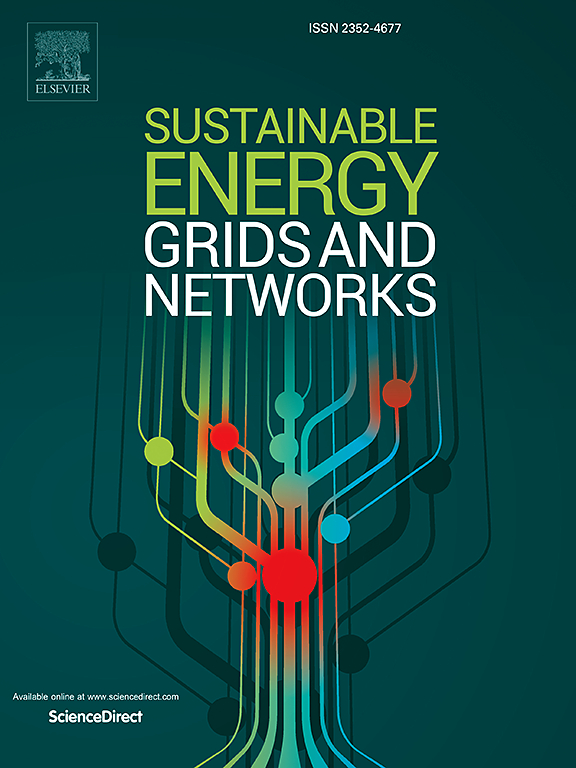A novel MILP formulation for optimal allocation and coordination of protective and switching devices in active distribution networks
IF 4.8
2区 工程技术
Q2 ENERGY & FUELS
引用次数: 0
Abstract
In the last decade, the increasing penetration of distributed generation has prompted the proposal of new formulations for distribution protection system planning, as the typical indications of coordination may not be reliable for active networks. In this context, a few papers that explicitly enforce coordination constraints have been published. However, these papers are mostly based on heuristics and metaheuristics; therefore, although the solutions are feasible, there is no guarantee of optimality. This paper presents a mixed-integer linear formulation for the allocation and coordination of control and protective devices in distribution systems with distributed generators. Thus, the proposed approach guarantees both the optimal investment plan and feasibility of the protection system operation. The proposed formulation is tested for a 69-node system considering load restoration possibilities via island operation, using protective devices, and load transfer to neighboring feeders and fault permanent isolation, using switching devices. The results attest to the cost-effectiveness of the protection system and its operational feasibility, as well as the superiority of the proposed model over simpler existing ones.
有源配电网中保护与开关装置优化配置与协调的一种新的MILP公式
近十年来,分布式发电的日益普及促使人们提出了新的配电保护系统规划公式,因为典型的协调指标对于有功电网来说可能并不可靠。在这种情况下,已经发表了一些明确实施协调约束的论文。然而,这些论文大多基于启发式和元启发式;因此,虽然解是可行的,但不能保证最优性。本文提出了分布式发电机配电系统控制保护装置配置与协调的混合整数线性公式。因此,该方法既保证了投资方案的最优性,又保证了保护系统运行的可行性。本文对一个69节点的系统进行了测试,该系统考虑了通过孤岛操作恢复负载的可能性,使用保护装置,将负载转移到邻近的馈线,并使用开关装置永久隔离故障。结果证明了该保护系统的成本效益和操作可行性,以及所提出的模型相对于较简单的现有模型的优越性。
本文章由计算机程序翻译,如有差异,请以英文原文为准。
求助全文
约1分钟内获得全文
求助全文
来源期刊

Sustainable Energy Grids & Networks
Energy-Energy Engineering and Power Technology
CiteScore
7.90
自引率
13.00%
发文量
206
审稿时长
49 days
期刊介绍:
Sustainable Energy, Grids and Networks (SEGAN)is an international peer-reviewed publication for theoretical and applied research dealing with energy, information grids and power networks, including smart grids from super to micro grid scales. SEGAN welcomes papers describing fundamental advances in mathematical, statistical or computational methods with application to power and energy systems, as well as papers on applications, computation and modeling in the areas of electrical and energy systems with coupled information and communication technologies.
 求助内容:
求助内容: 应助结果提醒方式:
应助结果提醒方式:


